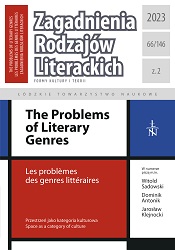Sława literacka: próba typologii i zawężenia pola badań
Literary Celebrity: Attempt at Typology and Narrowing the Field of Research
Author(s): Dominik AntonikSubject(s): Cultural history, Culture and social structure , Sociology of Culture, Marketing / Advertising, Socio-Economic Research, Sociology of Literature
Published by: Łódzkie Towarzystwo Naukowe
Keywords: literary celebrity; fame; prestige; economy; author;
Summary/Abstract: Fame studies are a well-developed and acknowledged branch of academic reflection on culture, and celebrity authors have recently been more and more often the subject of these analyses. The problem is that the category of famous writer is quite capacious and may include professional and unprofessional authors representing opposing sides of cultural production. Different disciplines interested in literary fame focus on specific examples of celebrity authors that may seem obvious from their point of view but from a wider perspective they are not. Consequently, it is not clear who the celebrity author is, which leads to confusion and the merging of separate phenomena, making the elitist critique of star authors easier. This article presents an attempt at the typology of literary fame which aims at clarifying the problem and distinguishing a very specific category of famous writer who is theoretically, structurally, and functionally most complicated and to whom the most advanced studies are devoted. The typology proposed includes three types of literary fame along with their characteristics. The first refers to celebrities of non-literary fields (politicians, athletes, singers, stars of the internet etc.) who happen to publish a book. The second includes professional authors of bestsellers in genre literature whose names are as famous as their titles and may be used in marketing practices. The last and most important type refers to authors who enjoy both popularity and cultural prestige. They combine fields, forms of social recognition and kinds of capital that should be mutually supplanting. Going further, these authors fall outside the traditional division into high art and popular art as they smoothly move between a number of fields, gathering both the cultural and the economic capital. In short, they straddle the divide between autonomy and heteronomy, which distinguishes them from stars operating in historical mass culture and from writers who, despite the popularity, do not enjoy cultural prestige.
Journal: Zagadnienia Rodzajów Literackich
- Issue Year: 66/2023
- Issue No: 2
- Page Range: 0-0
- Page Count: 14
- Language: Polish

